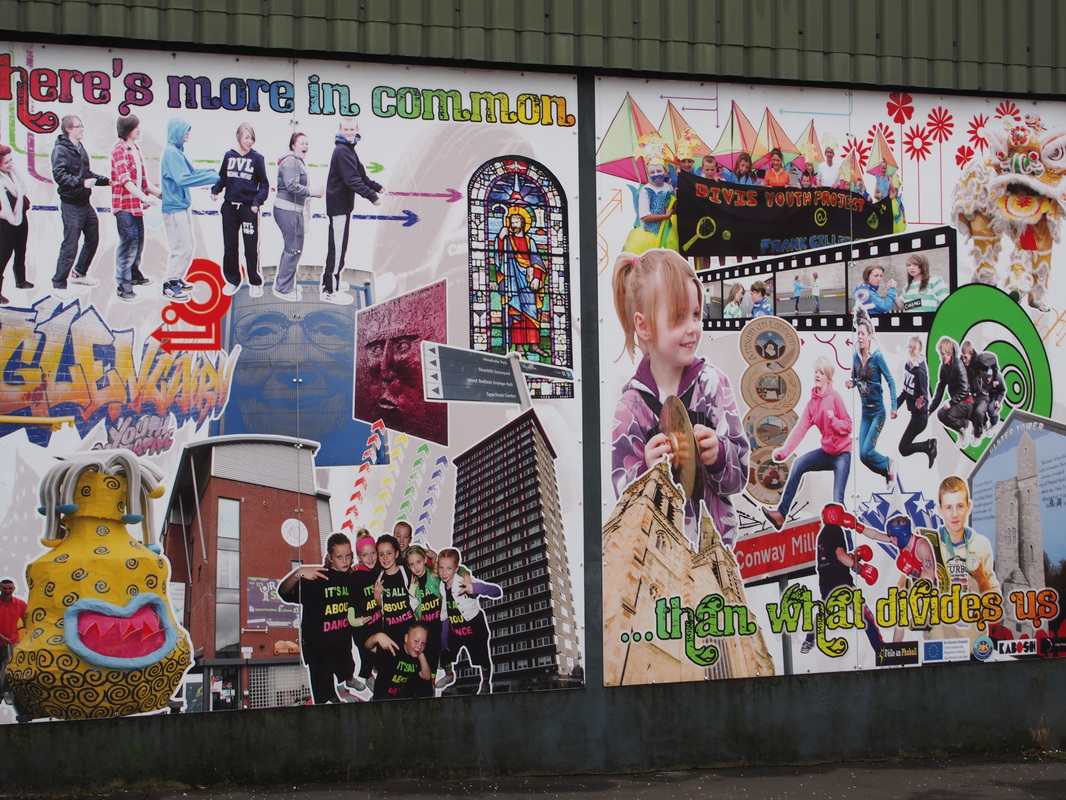
It was night as I approached the narrow metal gate that offered the only way through the giant mesh and concrete security wall. I was forced to slow down and wait for the red light to change while a soldier - high on a gantry, machine gun in hand - surveyed my motor.
What if, by some quirk of computer, my registration plate coincided with that of an on the run paramilitary? How vulnerable was I here, waiting to cross from one side of the city's divide to the other? Were there locals who might try to attack me as I sat at the wheel?
I was a Brit on his first visit to Belfast, and my paranoia was running high. These streets I was driving - first the Shankhill, next the Falls - were only too familiar from TV news. They were the home of the Troubles, synonymous with riots and petrol bombs. An area where having the wrong name, in the wrong place, at the wrong time could lead you a bloody and brutal death.
And this was a significant day. Thursday 13 October 1994. A Loyalist ceasefire had been declared from midnight. Two months earlier, the IRA had agreed to temporarily lay down their weapons.
It was a time of celebration. The fighting was over - at least for now. On this chilly autumn evening, people were gathering in the streets to wave flags (both Union Jacks and tricolours) and cheer the good news.
But there was tension, too. It might only take a stray bullet, an attack by a dissident faction on one side or the other for the whole thing to literally blow apart. And in the meantime, here was an armed soldier, viewing me suspiciously from his elevated vantage point.
Thankfully, the peace held. And yes, I was eventually given the green light and allowed to pass safely through the wall. Phew.
When I returned to Belfast last week, I revisited one of the checkpoints. Was this the same one I'd passed through so nervously years earlier? I couldn't be sure. The big ugly gates, topped with spikes, looked familiar. But the rest looked so different from how I'd remembered it. The traffic was passing through freely. No soldiers, no gantry, no big deal - or at least not in any virtually any other city. But this represents fantastic progress for Belfast.
The rest of the wall remains, though, separating Loyalist from Nationalist, Catholic from Protestant, and its possible demolition remains a source of lively controversy. Twenty years of relative peace clearly haven't dissolved the decades of mistrust.
For me though, that spike-topped gate is a symbol of hope.
Belfast has a great international tourist attraction based around the Titanic, a smart new city centre shopping mall - as well as some of the greatest fried breakfasts the world can offer. But it doesn't amount to much if visitors are constantly being reminded of pre-1989 Berlin or Gaza.
Being able to drive from one end of the road to the other without being stopped by the Army? Now that's what I call an achievement.
What if, by some quirk of computer, my registration plate coincided with that of an on the run paramilitary? How vulnerable was I here, waiting to cross from one side of the city's divide to the other? Were there locals who might try to attack me as I sat at the wheel?
I was a Brit on his first visit to Belfast, and my paranoia was running high. These streets I was driving - first the Shankhill, next the Falls - were only too familiar from TV news. They were the home of the Troubles, synonymous with riots and petrol bombs. An area where having the wrong name, in the wrong place, at the wrong time could lead you a bloody and brutal death.
And this was a significant day. Thursday 13 October 1994. A Loyalist ceasefire had been declared from midnight. Two months earlier, the IRA had agreed to temporarily lay down their weapons.
It was a time of celebration. The fighting was over - at least for now. On this chilly autumn evening, people were gathering in the streets to wave flags (both Union Jacks and tricolours) and cheer the good news.
But there was tension, too. It might only take a stray bullet, an attack by a dissident faction on one side or the other for the whole thing to literally blow apart. And in the meantime, here was an armed soldier, viewing me suspiciously from his elevated vantage point.
Thankfully, the peace held. And yes, I was eventually given the green light and allowed to pass safely through the wall. Phew.
When I returned to Belfast last week, I revisited one of the checkpoints. Was this the same one I'd passed through so nervously years earlier? I couldn't be sure. The big ugly gates, topped with spikes, looked familiar. But the rest looked so different from how I'd remembered it. The traffic was passing through freely. No soldiers, no gantry, no big deal - or at least not in any virtually any other city. But this represents fantastic progress for Belfast.
The rest of the wall remains, though, separating Loyalist from Nationalist, Catholic from Protestant, and its possible demolition remains a source of lively controversy. Twenty years of relative peace clearly haven't dissolved the decades of mistrust.
For me though, that spike-topped gate is a symbol of hope.
Belfast has a great international tourist attraction based around the Titanic, a smart new city centre shopping mall - as well as some of the greatest fried breakfasts the world can offer. But it doesn't amount to much if visitors are constantly being reminded of pre-1989 Berlin or Gaza.
Being able to drive from one end of the road to the other without being stopped by the Army? Now that's what I call an achievement.
 RSS Feed
RSS Feed
